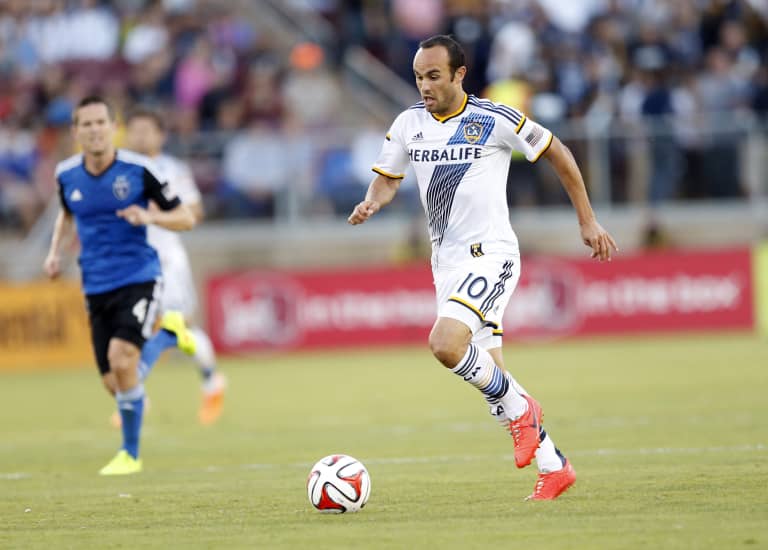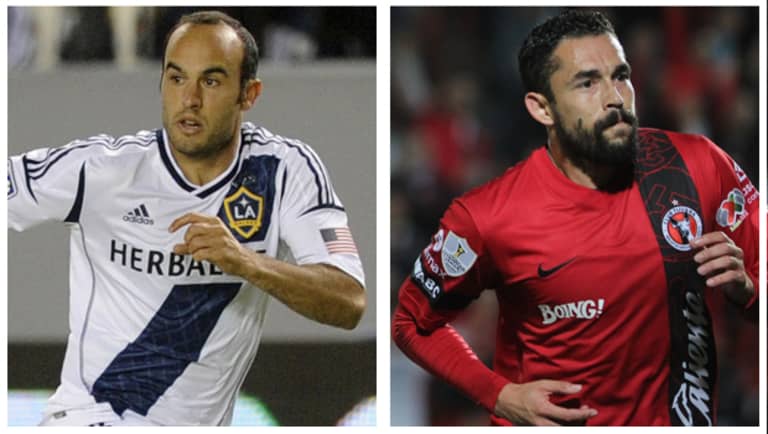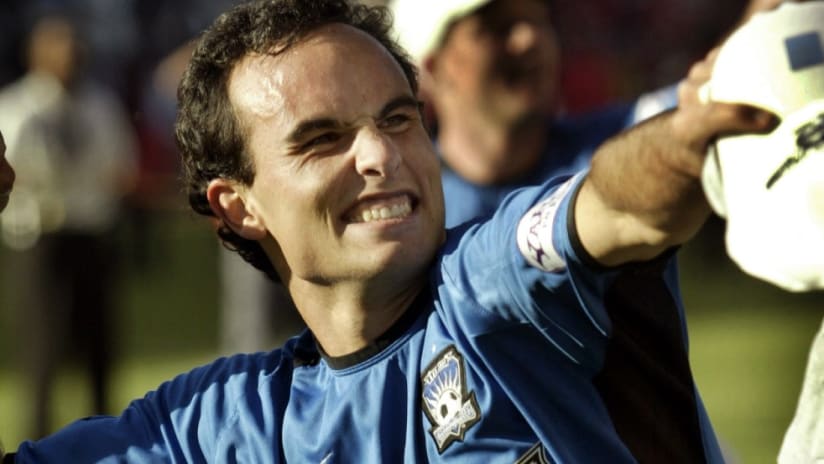LD, Quake for life.
As far as MLS counterfactuals go, it’s a pretty fun one.
Way back when, at the dawn of the new century, Landon Donovan’s club destination was a subject of substantial drama for an American soccer scene that was often short in that category. The precocious talent had signed with Bayer Leverkusen fresh off the back of his Golden Ball performance at the 1999 U-17 World Cup, only to find life in the German industrial town a bit too dour for his sunny California soul, setting off a lengthy loan stint with the San Jose Earthquakes.
San Jose got to claim Donovan because they topped the allocation order following a woeful wooden-spoon campaign in 2000 — and the teenager promptly took them from worst to first. He racked up 32 goals and 29 assists across four seasons by the Bay, not to mention 10g/6a in the postseason as he helped the Quakes hoist two MLS Cups. In the midst of it all, he rocketed to even bigger fame as a shining light of the US national team’s upstart run at the 2002 World Cup.
In January 2005, he jetted back to Germany to give Leverkusen another shot, but lasted just a few months before asking his agent to work out a way for him to return to MLS. And this time, thanks to a confluence of factors that included LD’s own preference, he wound up with his hometown LA Galaxy.
The rest is history, right? Including four MLS Cup triumphs – and one of the most hateful receptions ever provided to any MLS player on his first game back in San Jose, where he was branded “Judas” and worse by the jilted Quakes faithful, who surely would’ve preferred to welcome him back from Europe with open arms.
So what might have happened if he’d picked NorCal? Let’s get hypothetical…
1) The Quakes don’t head south
Looming in the background of the whole Donovan saga was the threat of relocation that stalked the Quakes around this time, and was eventually fulfilled when the franchise moved to Houston and became the Dynamo at the end of 2005. The club were owned by AEG at the time, counted among several owned by that group over the years. That, plus lack of progress on a stadium deal, made south Texas a more inviting destination.
Even as the league made clear it valued the San Jose market and would return as soon as possible — which it did two years later, with the identity and history intact — Quakes fans felt like redheaded stepchildren (and that factored into their loathing of Donovan, who also had to consider the specter of relocation in his choice).

Donovan pictured in action for the Galaxy | USA Today Sports Images
One can visualize a scenario in which LD puts loyalty above all and returns to the Bay instead of going south. With the rising young face of US soccer back in the fold with a team that would win the 2005 Supporters’ Shield, the dynamics (so to speak) shift enough to make the Quakes more alluring to fans, sponsors and potential owners alike. Charmed by the USMNT hero, Peter Thiel or some other Silicon Valley venture capitalist flush with liquidity is convinced to take a flyer.
As it was, the v2 Quakes had to wait years for a home of their own, finally moving into their current home in 2015. So the first edition of the club, shored up by stacks of tech money and girded by Donovan’s star power, manages the tenure at Buck Shaw Stadium even more effectively than the “Goonies” did when they made it the league’s toughest place to play for a few years at their peak.
They win the 2005 title and hoist a few more trophies in the ensuing years, and are swaggering members of the MLS elite when Earthquakes Stadium opens.
2) The Galaxy aren’t quite the Galaxy
No Quakes relocation would mean a fundamentally different MLS experience for Houston. The Bayou City would have to be an expansion city, thus no out-of-the-box, back-to-back championships with an established squad in ‘06 and ‘07. Perhaps they’d have to join the league alongside Toronto FC in ‘07, or even wait until ‘08 to arrive instead of San Jose part II. (More on that in a moment.)
Absent Donovan’s attacking quality and name recognition, the Gs invest their faith in another rising talent, striker Herculez Gomez. With LA able to hang on to Carlos “Pescadito” Ruiz instead of shipping him to FC Dallas to swing the Donovan acquisition, Herc blossoms alongside the Little Fishy, honing the poaching qualities that made him so successful in Mexico in reality 1.0. Gomez stays Stateside and becomes a USMNT mainstay for nearly a decade.

If Donovan had remained with the Quakes, Herculez Gomez, right, could've emerged as a regular for years for the Galaxy and the US national team, Boehm writes. | USA Today Sports Images (left), Mexsport (right)
Even with all that and David Beckham’s 2007 arrival, the door is opened a bit wider for newcomers Chivas USA to stake out some turf in SoCal. Without being cut into ribbons by Donovan in SuperClasico matchups, the Goats manage to consolidate their progress under Bob Bradley and instead of becoming whipping boys, a tense stalemate develops akin to the current state of New York’s Hudson River Derby between NYCFC and the Red Bulls.
3) MLS’s course is shifted forever
The dominoes keep falling: With Chivas USA becoming an encouraging story instead of a cautionary tale, their mother club’s hated rival Club America renew their interest in an MLS maneuver and are awarded an expansion slot to set up shop in Houston.
That, in turn, fuels FC Barcelona’s interest in the league, advancing the Spanish giants’ timeline enough that Miami Blaugranas CF launch at Florida International University in 2008, getting off the ground before that year’s global economic recession can interfere with the plans. That only inspires further interest from global soccer’s power players: City Football Group take the plunge on NYCFC earlier than planned, Arsenal ink a more formal relationship with the club formerly known as Colorado Rapids — now Rocky Mountain Gunners FC — and Paris Saint-Germain follow suit with a swoop for the Montreal Impact.
The expansion boom still unfolds, albeit with a more international character. And Donovan himself evolves a bit differently after becoming a Quakes icon, trying his hand at Everton on a loan before joining the English club on a permanent basis after his 2010 World Cup exploits.
And what happens next? We’ll leave that one for another story hour ...














